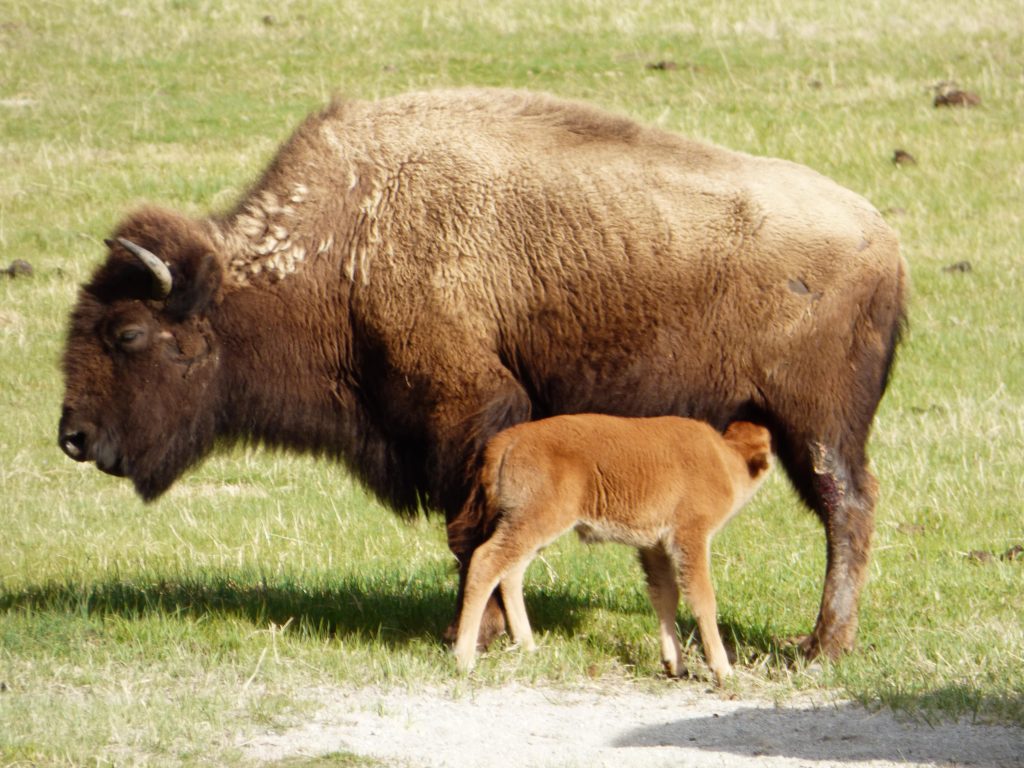
Bison and calf
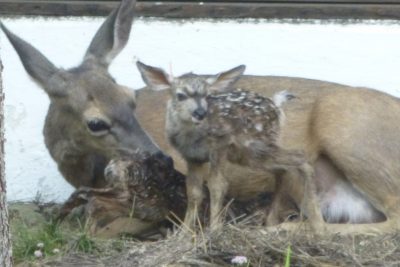
This doe found a very public place for her fawns in Sequoia National Park
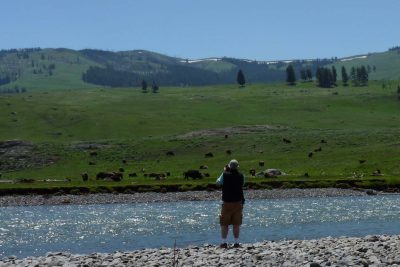
Photographing bison in the Lamar Valley
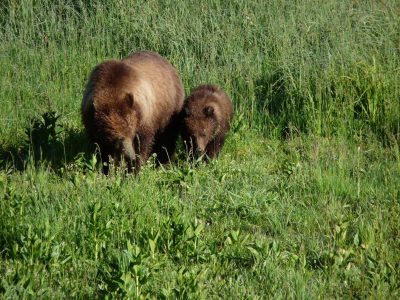
Grizzly bear and cub in Yellowstone National Park
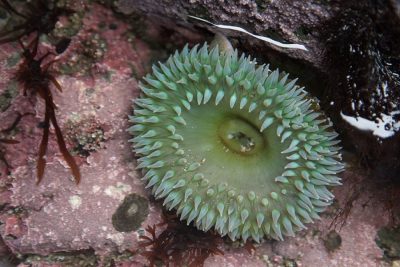
Sea Anemone seen while Tidepooling
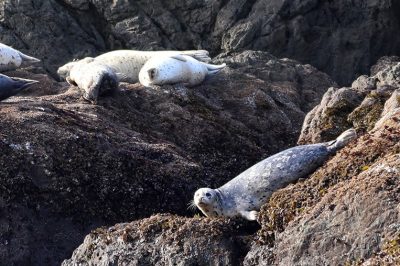
Harbor Seals lounging in Bandon, Oregon
California’s Sierra Nevadas
The Sierra Nevada Mountains are something special in the spring. The National Parks are still quiet from the winter, but the mountains and meadows are alive with animals and bright with wildflowers. It’s a good time to wander through the Giant Sequoia groves of Yosemite and Sequoia National Parks for some quiet reflection. Of course, the meadows are teeming with wildlife and offer the best chance to see bear cubs, deer, marmots still fluffy from winter, and a variety of birds and other animals.
Thanks to the Conservation Corps and the Parks Service there are many easy walking trails that lead you to see all of this up close, and longer trails if you want to go deeper into the wilderness, (these parks protect huge swaths of wilderness) but keep your eyes peeled as your driving through as well.
Although I once had the opportunity to see a doe birth three tiny fawns outside of the post office in Sequoia National Park, it’s usually bear cubs that steal the show for travelers. All of the wild bears in California are of the species called American black bear, but they come in a variety of colors, from cinnamon to blond to deep brown and black. Smaller and more timid than grizzly bears these charming animals are most frequently seen in the early morning and evening, foraging in meadows and tearing through rotten logs.
The wild animals, the striking granite faces and the towering waterfalls are part of the reason the Sierra Nevadas are always calling to us. We visit this region on many of our small group travel tours, including the California Sierra Nevada Tour and the more ambitious Western Wonderland, which explores a tour path across the west, including Monument Valley, the Grand Canyon, and Death Valley.
The Greater Yellowstone Ecosystem
Yellowstone National Park is such an obvious choice for great American wildlife that I hesitate to put it down, but the truth is that this incredible region has been preserved for over a century for good reason. Yellowstone is absolutely teaming with wildlife. Arguably, the American concept of a national park was invented to protect the Yellowstone area. Yellowstone has many famous features, but the valleys are great places to see the big animals including bison, grizzly bear and elk. In the spring and early summer the baby bison will be out here in the grasslands of Lamar and Hayden Valleys. It’s interesting to reflect that these bison herds have been living and thriving in this region continuously since prehistoric times.
Nearby Grand Teton National Park is part of the same greater ecosystem. Against a backdrop of magnificent mountains this park is a preferred habitat for moose, coyotes, eagles, and many other animals. It’s home to the enormous trumpeter swan, which can have a wingspan of over 10 feet, and also one of the smallest birds on the continent, the calliope hummingbird, which can have a wingspan of 11 cm. However if we are looking for record breakers, we are more likely to encounter pronghorn, which are the fastest land mammal of the Northern Hemisphere.
Traveling with a small trusted group allows us to move carefully and experience animals in their natural habitat without disturbing them. We take the necessary precautions designed to keep people safe, and to keep the animals healthy and wild. Keeping a respectful distance is very important as you wander into wilderness habitats. I like to take the opportunity to see some of the great predators up close at the Grizzly and Wolf Discovery Center, which works with animals who are unable to survive in the wild.
The Greater Yellowstone Ecosystem is one of the last nearly intact temperate ecosystems on the planet. It’s truly a national treasure. We designed the itinerary of our Wild West Yellowstone and the more focused North to Yellowstone to explore this region. The Wildife Expidition Tour particularly focuses on spotting wild animals in Yellowstone, before the tour heads on to experience the natural and cultural opportunities in the Badlands and Rockies region.
Pacific Northwest
We are looking forward to spring here in the Pacific Northwest where our office is located. Although the animals here in the volcanic Cascade Mountains, the unique Siskiyou Mountains, and the rugged Pacific Coast are shyer and less habituated to humans, a little knowledge and patience pays off. As the weather warms up fawns, elk calves (and the birds that raise a new family outside my window each year) are common sights. Along the coast of Northern California elk herds gather in meadows to forage for new spring grass. And the rocky coastal areas in Oregon provide a safe space for sea lions, harbor seals and their pups in the spring. The tide pools of the Oregon coast are full of fascinating, colorful creatures. We are thankful to be able to explore, travel and be inspired by all of these wonderful sights and regions. March 3rd is Word Wildlife day and we give thanks to all of the beautiful places where we can spot wildlife in the wild, and all of the hard work that goes into preserving and protecting these delicate regions.


